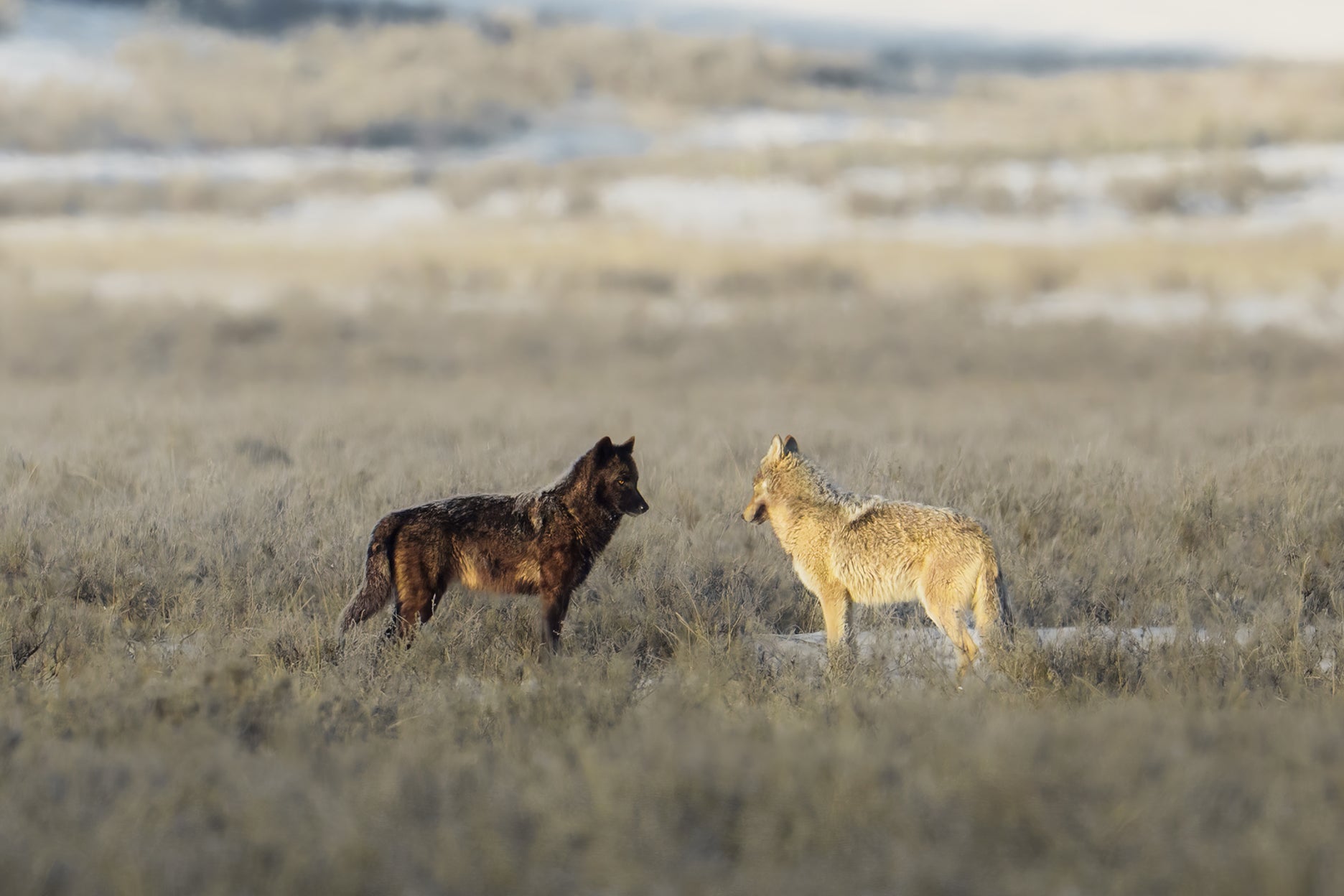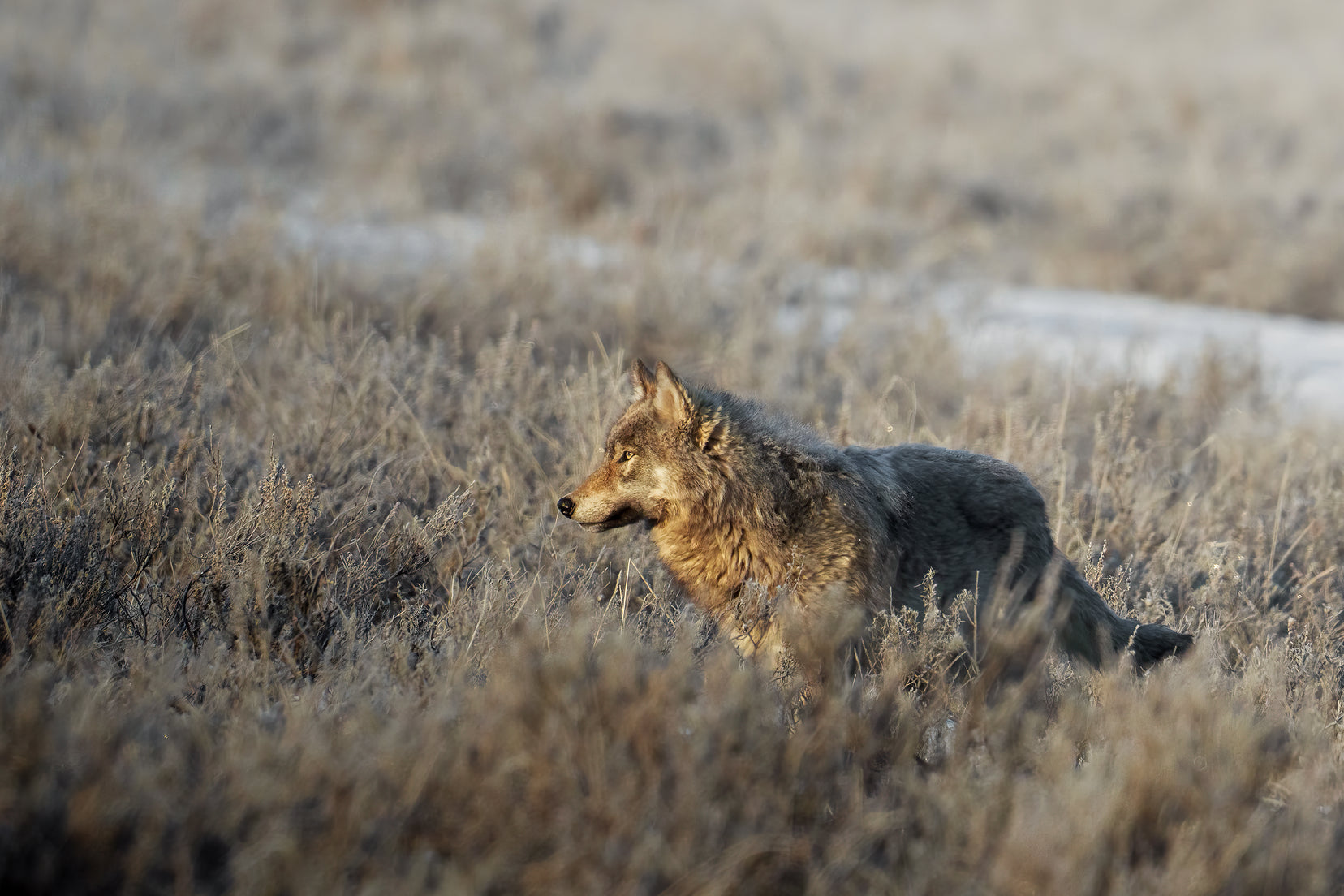
Since their reintroduction in 1995, the gray wolves of Yellowstone have become some of the most closely observed and celebrated animals in the world.
Since their reintroduction in 1995, the gray wolves of Yellowstone have become some of the most closely observed and celebrated animals in the world.
Their return to the park set off a chain of interactions that rebalanced ecosystems long deprived of these apex predators: elk populations shifted, overgrazed tree communities began to reclaim the skylines, and beavers, songbirds, and raptors reappeared. At the same time, the wolves became the subject of the world’s longest-running study of the species, producing unprecedented insight into pack dynamics, genetics, and behavior.
Beyond the science, Yellowstone’s wolves are widely watched, named, and remembered—their lives traced like characters in an unfolding saga. Among them, certain packs and their leaders have achieved legendary status. Their histories reveal not only the resilience of the species but also the constant flux of life on the Yellowstone stage: leadership roles are contested, bloodlines carried forward, legacies fade and reemerge in new forms.
For Jacques Marie Mage, the wolves not only inform the way we collaborate and operate in the world, but they also serve as inspiration for the individual eyewear styles in the Yellowstone Collection—a special series that, since its inception in the Summer of 2020, has helped to demonstrate our philanthropic passions, aimed at empowering research and advocacy that counters misinformation regarding wolves and helping ensure these canine protectors of the American West recover and remain for generations to come.
Druid Peak Pack
The Druid Peak Pack was among the most famous and dominant in Yellowstone history. Formed in 1996 from some of the first wolves that were brought back into the Park, the Druids established themselves in the Lamar Valley and grew to a remarkable size, reaching 37 members in 2001—an unusually high number for any wolf pack. At their peak, they effectively controlled the valley and became a symbol of wolf recovery in the park.
The pack was led by the celebrated alpha pair Wolf 21M and 42F, whose reign represented stability and strength during the late 1990s and early 2000s. Their size and visibility made them a favorite of wolf watchers, and their hunts, territorial battles, and social dynamics became legendary. By the late 2000s, the pack declined due to internal strife, disease, and conflict with rival packs. The original pack eventually dissolved, though their bloodline persisted in descendants like the Lamar Canyon wolves.
–
Mollie’s Pack
Mollie’s Pack is Yellowstone’s longest-standing wolf family, established in 1995 from the original group of reintroduced wolves released into the park. Named after wildlife biologist Mollie Beattie, the iconic first female director of the U.S. Fish and Wildlife Service, the pack originally settled in Pelican Valley, an area with one of the highest concentrations of grizzly bears in Yellowstone.
Because of this overlap, Mollie’s wolves developed a reputation for hard survival, often competing with bears for access to carcasses. Despite these challenges, the pack endured for decades, producing many litters that contributed to Yellowstone’s wider wolf population. Recently sighted in Yellowstone's Northern Range, including the Lamar Valley, Mollie’s Pack remains a testament to adaptation, resilience, and the continuing influence of those first reintroduced wolves.
–
Lamar Canyon Pack
The Lamar Canyon Pack rose to prominence in 2008, founded by the legendary alpha female 06F (also known as 926F), a descendant of the Druids. Known for her hunting skill, independence, and charisma, 06 led the pack with two younger males, building a reputation that drew international attention. Her ability to take down elk single-handedly became the subject of countless stories and photographs, cementing her as perhaps the most famous wolf in Yellowstone.
Tragedy struck in 2018 when 06 was shot and killed by a hunter less than a mile outside the Park boundary, galvanizing public support for wolf conservation. Despite her death, the Lamar Canyon lineage continued for several years under her offspring until 2020, when a larger rival pack forced them from their territory. The story of 06 remains one of Yellowstone’s most powerful examples of both the fragility and resilience of wolf packs.
–
Canyon Pack
The Canyon Pack, established in the mid-2000s, became well known for its strikingly beautiful alpha pair: a white alpha female known as “White Lady” and a large gray alpha male. Frequently seen roaming near popular sites like Canyon Village and Hayden Valley, their high visibility in central Yellowstone, and the exceptional longevity of their alpha pair—who were together for nine years—made them one of the most photographed packs in the park.
The Canyon wolves often drew attention for their cooperative hunting of bison and elk in the open meadows, providing dramatic encounters for visitors and researchers alike. Over time, pack numbers fluctuated as rival packs and natural pressures tested their hold on territory, but their legacy remains one of visibility and charisma. The image of White Lady, in particular, has endured as one of the most iconic wolf sightings in Yellowstone’s history. Sadly, she was eventually euthanized after sustaining a gunshot wound outside the park in 2017.
–
Junction Butte Pack
The Junction Butte Pack is one of Yellowstone’s most visible and frequently observed packs today. Based near the confluence of the Lamar River and Soda Butte Creek, the pack has provided countless opportunities for visitors and researchers to watch wolves in the wild.
Until recently, the pack was led by the alpha female 907F, one of the oldest recorded wolves in Yellowstone. Though she lost the use of her left eye at around age four due to an unknown injury or illness, her longevity and leadership made her a standout figure in the park’s ongoing wolf story, earning her the nicknames, “Queen of the Wolves,” and “One-Eyed Wonder.” The pack has been known for its cooperative hunting and for raising large litters of pups, helping stabilize its numbers despite constant pressures from rival packs and the challenges of survival in the wild.
–
Lupine Creek Pack
The Lupine Creek Pack originated as a split from the Eight Mile Pack, leaving the older group with fewer wolves. The Lupine wolves are often seen near Mammoth Hot Springs, Mount Everts, and the Blacktail Plateau, occupying a territory that bridges the park’s northern entrance and its central range.
Though not as well-known as the Druids or Lamar Canyon wolves, the Lupine Creek Pack represents the resilience of Yellowstone’s wolf population. Their movements around highly visible areas like Mammoth have made them familiar to visitors, while their ability to persist in contested territory underscores the constant flux of wolf society.
–
Cougar Creek Pack
The Cougar Creek Pack, formed in 2001, is one of Yellowstone’s lesser-seen but longest-lasting wolf families. Ranging through the remote Gallatin Range in the park’s northwest, they are rarely visible from roads or public viewing points. Their elusive nature has given them a reputation for mystery and endurance.
Known for their uncanny ability to shed or disable their radio collars, the Cougar Creek wolves have remained a consistent presence for over two decades, making them the second-oldest continuously active pack in the park. As of recent surveys, the dominant pair—1480F and 1342M—remain at the helm, their black coats faded to silver with age. The pack’s longevity and remoteness make them an important reminder that not all Yellowstone wolves are public figures; many endure quietly in the backcountry, shaping the ecosystem beyond our sight.
The Lone Wolf Dies, But The Packs Survive
From the dominance of the Druids to the legend of 06 in Lamar Canyon, from the cooperative strength of Junction Butte to the resilience of Lupine Creek and Cougar Creek, Yellowstone’s wolf packs embody survival in its many forms. Each is a living chapter in a story that began with reintroduction and continues through the vigilance of researchers, the dedication of conservationists, and the fascination of countless visitors who come to catch a glimpse of America’s most iconic keystone predator.

WRITTEN BY JMM
#Stewardship